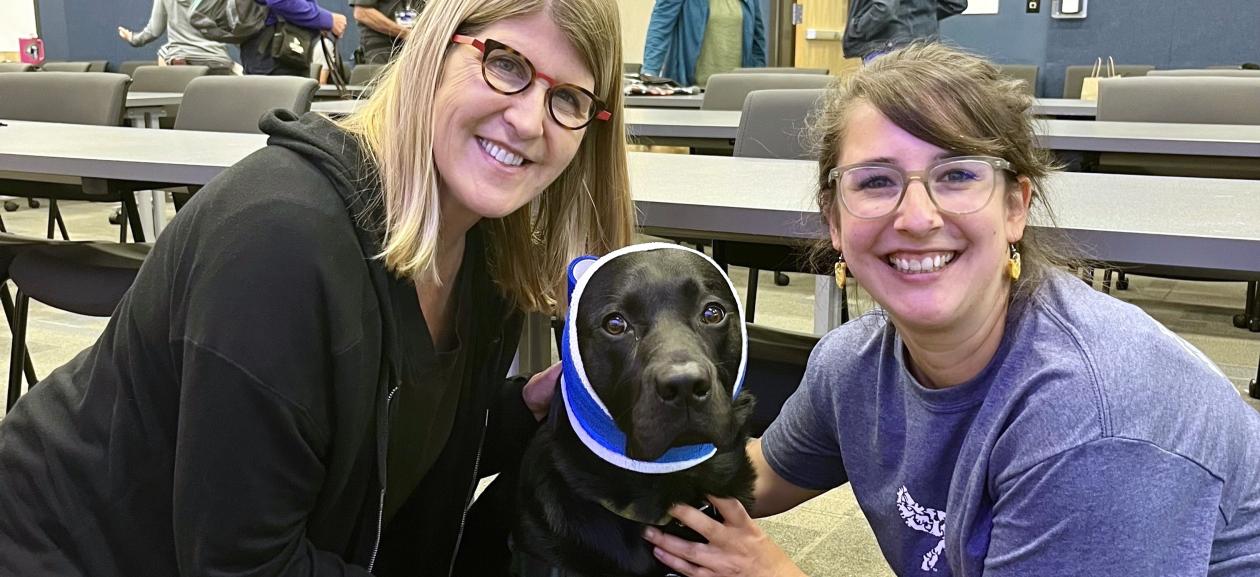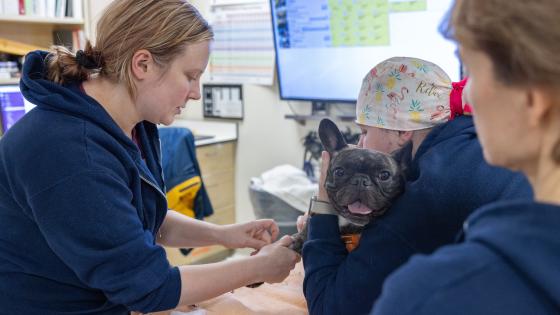
How to Build a Pet First Aid Kit
Every pet owner should have a pet first aid kit available in case of emergency. If you need help to put one together, we’ve got you covered. Below is a list of essential items your pet could need in the event of injury or trauma. Keep in mind that if you give your pet first aid care, follow your treatment up with immediate veterinary attention. Pet first aid is not a substitute for veterinary care, but it could save your pet’s life or prevent further injury until you see a veterinarian or critical care specialist.
Basic items to start with:
- My Pet's Information Card. Information about your pet, including vaccinations, medications, medical records, and a current photo.
- Phone numbers: veterinarian, nearest emergency veterinary clinic including directions, and a poison control center hotline (Animal Poison Control Center: 888-426-4435). DoveLewis Emergency Animal Hospital can be reached at 503-228-7281 and is located at 1945 NW Pettygrove St., Portland.
- Nylon leash
- Pet crate or carrier (a safe, calming place for your pet for transport)
- Nonstick bandages, towels, or strips of cloth to cover wounds and control bleeding
- Gauze rolls – for wrapping wounds or muzzling
- Sterile saline eye solution (to flush out eye contaminants and wounds)
- Gloves (non-sterile or nitrile)
- Bottled water and drinking containers
- Digital pet thermometer and lubricant to take a pet’s temperature by inserting the thermometer rectally
- Clean towels (used with direct pressure over wounds to help control bleeding)
- Socks/T-shirt for foot bandages or warmth
- Tape (duct, masking, medical)
- Water-based lubricant
- Muzzle
- Medications your animal is currently taking
Additional items that could be helpful:
- Pet first-aid book that outlines the basics of treating wounds and injuries
- Self-cling bandage (sticks to itself but not to fur)
- Anti-bacterial wipes or pads
- Betadine solution
- Triple antibiotic ointment
- Q-tips
- Hot/cold pack (to reduce swelling). Note: Never use directly on your pet. Always use a barrier like a towel.
- Eye dropper – to give oral medications or flush wounds
- Scissors (with blunt ends)
- Thermal Blanket (to help control shock)
- Paper towels and hand sanitizer (for human use)
- Penlight/Flashlight
Recent Posts
Holiday Hazards for Your Pet
Deck the halls with boughs of holly … but be sure it’s out of reach of your furry friends! It’s easy to get swept up in the festivities of the season, but don’t forget that added fun means added risks for your pets.




